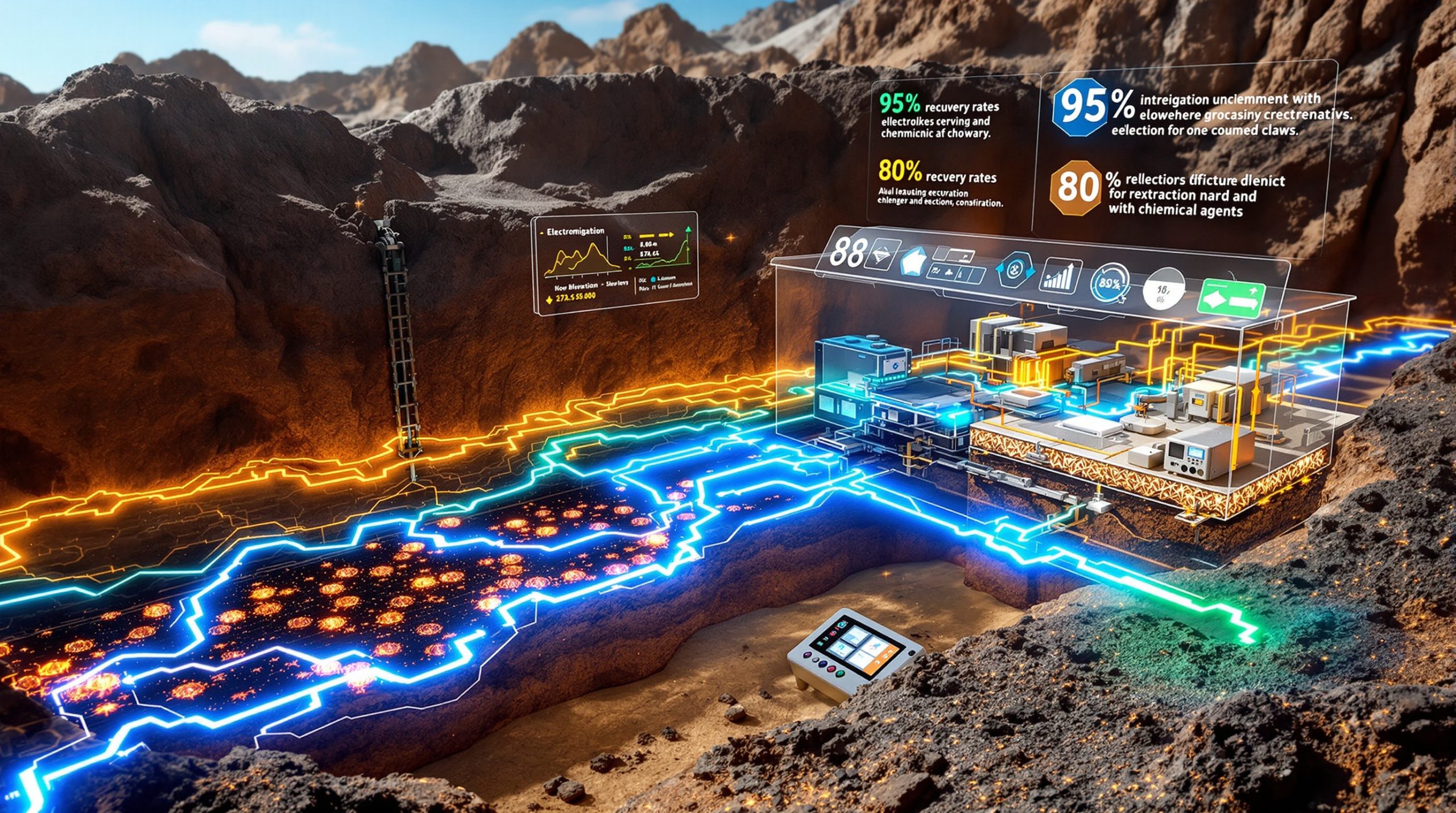Australia's Strategic Critical Minerals Partnership with Trump: Reshaping Global Supply Chain Dynamics
Australia and the United States have forged a groundbreaking Australia critical minerals Trump deal that promises to transform global supply chains and challenge China's market dominance. This $13 billion agreement represents more than just a trade deal – it signals a fundamental shift in how Western nations approach strategic mineral security in an increasingly complex geopolitical landscape.
The partnership emerges at a crucial time when control over critical mineral processing has become synonymous with technological and military advantage. Furthermore, the critical minerals energy transition demonstrates how essential these materials have become for renewable energy infrastructure. As one industry analyst noted, anyone who controls the supply of magnets controls the future, highlighting the strategic importance of rare earth elements in modern defense and technology applications.
Understanding the Australia-US Critical Minerals Framework
The bilateral agreement establishes an unprecedented financial commitment structure, with both nations pledging substantial investments to develop independent processing capabilities. This framework goes beyond traditional resource extraction agreements by focusing on value-added processing and strategic supply chain diversification.
Investment Architecture and Project Pipeline
The partnership creates multiple investment pathways designed to accelerate mineral processing operations across both countries. Key components include direct government investments, Export-Import Bank financing mechanisms, and private sector co-investment arrangements that leverage public funding to unlock larger project pipelines.
| Investment Category | Focus Area | Strategic Impact |
|---|---|---|
| Processing Infrastructure | Rare earth separation facilities | Reduced Chinese dependency |
| Technology Development | Advanced extraction methods | Competitive processing costs |
| Supply Chain Security | Strategic stockpiling | Enhanced resilience |
| Defense Applications | Military-grade materials | National security priorities |
The institutional framework establishes joint oversight mechanisms between the US Department of Energy and Australia's Department of Resources. This collaborative structure aims to identify supply vulnerabilities and coordinate accelerated delivery of processed materials to both nations' defense and technology sectors.
Queensland's Mineral Wealth Takes Center Stage
Queensland's mineral-rich regions contain significant deposits essential for modern technology applications. The state's northwest territories hold substantial reserves of vanadium, rare earth elements, and battery minerals that could benefit substantially from accelerated development timelines under the partnership framework.
The agreement supports establishing processing facilities closer to extraction sites, potentially creating regional employment opportunities while reducing transportation costs. Consequently, this approach represents a departure from Australia's traditional role as a raw material exporter toward becoming a significant player in value-added mineral processing.
Strategic Minerals Prioritized Under the Agreement
The partnership emphasises specific mineral categories essential for defense technologies, renewable energy systems, and advanced manufacturing applications. Understanding these priorities provides insight into both nations' strategic technological objectives.
Defense-Critical Materials Focus
Rare earth elements command particular attention due to their essential role in military applications. These materials enable advanced guidance systems, radar technologies, and precision-guided munitions that form the backbone of modern defense capabilities.
Gallium represents another strategic priority, given its critical role in semiconductor manufacturing for military electronics. Moreover, strategic antimony financing shows how targeted funding supports critical mineral development across allied nations.
Technology and Energy Applications
The partnership encompasses materials crucial for renewable energy infrastructure and electric vehicle production. Lithium and cobalt processing capabilities align with both nations' clean energy transition objectives while maintaining supply chain independence from potentially adversarial sources.
Advanced battery manufacturing requires consistent access to high-purity processed materials. The agreement aims to establish reliable supply chains that can support growing demand from electric vehicle manufacturers and grid-scale energy storage applications.
Challenging China's Market Control
China's dominance in rare earth processing presents significant strategic vulnerabilities for Western nations. Current market dynamics show heavy concentration in Chinese facilities for critical mineral processing operations.
Market Concentration Dynamics
Industry analyses indicate China maintains substantial control over global rare earth processing capacity, creating potential supply disruption risks for Western defense and technology sectors. This concentration has developed over decades through strategic investments in processing infrastructure and vertical integration of supply chains.
In addition, Trump's minerals order reinforces the strategic importance of establishing alternative processing capabilities. The partnership aims to establish alternative processing hubs that can provide competitive alternatives to Chinese facilities.
Australian Diversification Strategy
Australia's response focuses on developing domestic processing capabilities rather than merely exporting raw materials to Chinese refineries. This approach requires significant capital investment in separation technologies and skilled workforce development.
Projects under consideration include rare earth separation facilities in Western Australia and Northern Territory operations that could process materials for both domestic use and export to allied nations. However, the timeline for achieving meaningful processing capacity remains challenging given the complexity of rare earth separation technologies.
Defense and Security Implications
The Australia critical minerals Trump deal strengthens broader security frameworks between Australia and the United States, particularly the AUKUS partnership involving the United Kingdom. This integration supports advanced defense technology development and nuclear submarine programs.
AUKUS Integration Benefits
Nuclear submarine development requires specialised materials with stringent quality requirements. The critical minerals partnership ensures reliable access to materials essential for advanced propulsion systems and underwater detection technologies.
Advanced defense technologies increasingly depend on rare earth elements for electronic warfare systems, communications equipment, and precision guidance mechanisms. Secure supply chains become essential for maintaining technological advantages in modern military applications.
Supply Chain Security Measures
The framework includes provisions designed to prevent critical mineral asset sales to nations that could disrupt supply chains or use materials for adversarial purposes. These measures complement existing foreign investment screening mechanisms in both countries.
Coordinated stockpiling strategies aim to maintain strategic reserves that can buffer against supply disruptions or market manipulation attempts. Furthermore, enhanced recycling technologies also contribute to supply chain resilience by recovering valuable materials from end-of-life products.
Economic Risks and Market Dynamics
While the partnership offers significant strategic benefits, analysts have identified potential economic risks that require careful consideration. Understanding these challenges provides important context for evaluating the agreement's long-term viability.
Investment Risk Assessment
Establishing competitive processing facilities requires substantial capital expenditure and technological expertise. Australia must overcome higher labour costs and stricter environmental regulations compared to existing Chinese operations.
The timeline for achieving processing cost parity with established Chinese facilities remains uncertain. Market competition dynamics could influence pricing strategies and export opportunities, particularly for processed materials sold to international customers.
Balancing Trade Relationships
Australia faces the challenge of maintaining cooperation with the United States while preserving important trade relationships with China. This balancing act affects commodity pricing strategies and long-term export planning across multiple market segments.
For instance, the recent Australia-US bilateral framework demonstrates the strategic importance of this partnership. However, the partnership must navigate complex international trade dynamics without triggering retaliatory measures that could harm other sectors of the Australian economy.
International Partnership Comparisons
The Australia critical minerals Trump deal fits within a broader pattern of Western nations seeking supply chain diversification. Comparing this partnership to other international resource cooperation frameworks provides valuable context for understanding its potential impact.
Norway's Resource Management Model
Norway's approach to resource wealth management through its sovereign wealth fund differs significantly from Australia's critical minerals strategy. While Norway focused on taxation and revenue generation from oil exports, Australia emphasises processing value-addition and industrial development.
This difference reflects varying strategic priorities: Norway sought long-term financial security through investment diversification, while Australia aims for industrial capability development and supply chain control. Both approaches offer lessons for sustainable resource wealth management.
North American Critical Minerals Cooperation
Canada and the United States have developed similar critical minerals partnerships that complement the Australia-US agreement. These relationships create overlapping supply chain networks that enhance overall resilience and reduce single-source dependencies.
Consequently, CRM facility developments across Western nations suggest a coordinated approach to supply chain diversification. The emergence of coordinated Western critical minerals policies suggests a strategic realignment in global supply chain management.
Implementation Timeline and Key Milestones
Successful partnership implementation depends on achieving specific milestones within defined timeframes. Investors and industry stakeholders should monitor these developments to assess progress and identify emerging opportunities.
Near-Term Development Priorities (2025-2026)
- Export-Import Bank financing deployment: Activating credit facilities to support project development
- Processing facility construction: Breaking ground on separation and refining infrastructure
- Regulatory approvals: Completing environmental assessments and construction permits
- Workforce development: Training programmes for specialised processing operations
- Technology partnerships: Establishing knowledge-sharing arrangements between companies
Medium-Term Capacity Building (2026-2028)
- First processed materials delivery: Achieving production from new Australian facilities
- Quality certification: Meeting defence and technology sector specifications
- Supply contract negotiation: Establishing long-term delivery agreements
- Capacity expansion planning: Scaling operations to meet growing demand
- Recycling infrastructure development: Creating circular economy capabilities
Long-Term Strategic Objectives (2028-2030)
- Competitive cost achievement: Matching or approaching Chinese processing costs
- Technology innovation: Developing more efficient separation and purification methods
- Market share growth: Capturing significant portions of global processed material demand
- Supply chain diversification: Reducing Western dependency on Chinese processing
- Strategic stockpile management: Maintaining adequate reserves for security purposes
Global Pricing and Market Impact Considerations
The partnership's success will significantly influence global critical minerals pricing dynamics and market competition patterns. Understanding these potential impacts helps stakeholders prepare for changing market conditions.
Supply Chain Diversification Effects
Increased processing capacity outside China could stabilise pricing volatility by reducing supply concentration risks. However, initial investment costs may temporarily increase processed material prices as new facilities achieve operational efficiency.
Market competition between established Chinese processors and new Western facilities could drive technological innovation and efficiency improvements. This competition may ultimately benefit end-users through improved product quality and service reliability.
Technology Transfer and Innovation Dynamics
The partnership includes provisions for technology sharing between Australian and US companies, potentially accelerating development of advanced processing techniques. Joint research initiatives focus on improving extraction efficiency while reducing environmental impacts.
Innovation in recycling technologies could create new supply sources from electronic waste and end-of-life products. For instance, mining industry innovation demonstrates how technological advances are transforming the sector. These developments may reduce dependence on primary mineral extraction while supporting circular economy objectives.
Future Implications for Australia's Resource Sector
The Australia critical minerals Trump deal represents a fundamental shift from traditional resource export models toward strategic supply chain control and value-added processing. This transformation requires sustained political commitment, technological advancement, and careful international relationship management.
Success depends on executing complex industrial projects within challenging timeframes while maintaining competitive costs against established global producers. The partnership creates significant opportunities in processing technology, infrastructure development, and regional economic growth.
However, ultimate success requires navigating international trade relationships carefully while building domestic capabilities that can compete effectively in global markets. The recent analysis of what this deal means for Australia highlights both opportunities and challenges ahead.
For industry stakeholders and investors, the partnership signals Australia's transition toward becoming a significant player in critical minerals processing rather than merely a raw material supplier. This evolution could reshape the country's role in global supply chains while enhancing Western nations' strategic material security.
Disclaimer: This analysis is based on publicly available information and industry reporting. Investment decisions should be made based on comprehensive due diligence and professional financial advice. Political and market conditions may affect partnership implementation and outcomes.
Could Your Portfolio Benefit From Strategic Mineral Discoveries?
With Australia's $13 billion critical minerals partnership with the US creating unprecedented opportunities in strategic mineral processing, timing becomes crucial for investors seeking to capitalise on this sector transformation. Discovery Alert's proprietary Discovery IQ model delivers instant notifications on significant ASX mineral discoveries, helping subscribers identify actionable opportunities in critical minerals, rare earth elements, and defence-related commodities before broader market awareness develops. Begin your 30-day free trial today to position yourself ahead of this strategic supply chain revolution and explore how historic mineral discoveries have generated substantial returns for early investors.




